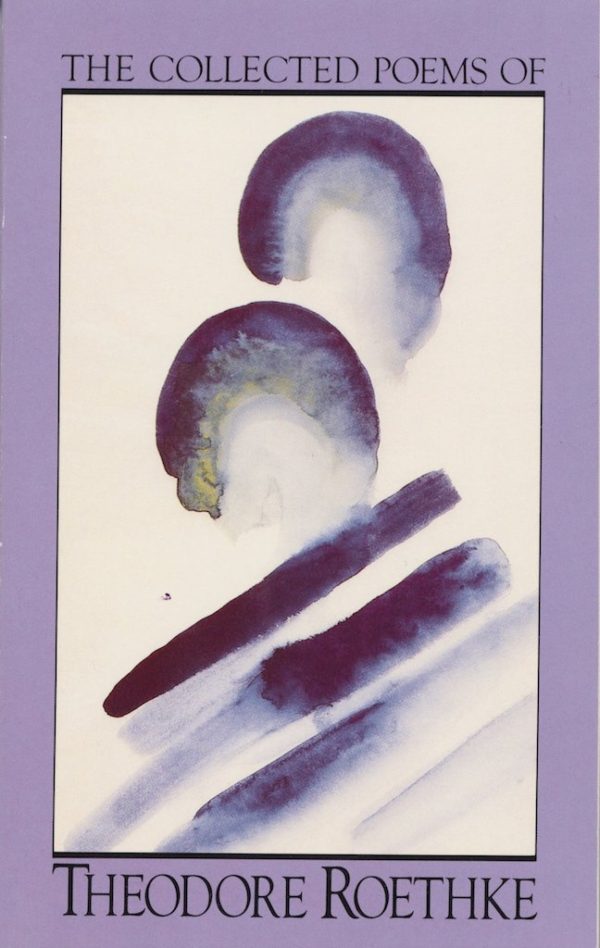Some poems present themselves as puzzles to be solved—we are now in a period of poetry that is often beautiful and unintelligible (you are supposed like it, even though you don’t know what it means)—but Theodore Roethke’s “The Meadow Mouse,” published in 1964 in his collection The Far Field, can be understood with very little trouble by almost anyone. Its narrative is as clear as water. What it says about nature’s workings is complex without being complicated. And its ending delivers a shock that can give you goosebumps. When I was teaching in Detroit in the 1970s, I often assigned this poem to poem-haters. Because of this poem, they were sometimes converted to the cause of poetry. “I didn’t know poems could do that,” they would say to me.
Theodore Roethke (1908 – 1963) had a particular fondness for the smallest features of nature: plants, stones, and other minimal things. In his work there is a tremendous desire for acceptance and joy in seeing oneself become part of the natural order: “My heart lifted up with the great grasses; / The weeds believed me, and the nesting birds” (“A Field of Light”). He grew up in Saginaw, Michigan, near the family business, a florist’s greenhouse, and in much of his manic, exuberant poetry, he seemed to incorporate that greenhouse within himself, inside his own body.
“The Meadow Mouse,” however, is a calmly straightforward narrative, an illustration of something whose point will be nailed to the wall in the poem’s last lines. It is in two numbered parts. The poem begins with what fiction writers sometimes call “the acute tension”: the event that has just happened and that sets the narrative into motion. The speaker has found a baby mouse in a meadow and has brought it home, put it in a shoebox, and fed it. The mouse is just a mouse, of course, but also a baby: “cradled in my hand” (note the cradle), and then the similes proliferate: this small creature is “a quaker,” “like a cartoon-mouse,” with feet like “small leaves,” “little lizard feet,” and he wriggles like a “miniscule puppy.” The first section ends with the baby mouse apparently at peace and no longer frightened by the speaker: “He seems no longer to tremble.”
When a poem begins to pile up the similes, comparing an object to multiple other objects, there’s going to be trouble. Multiple similes signify instability. An emotional shift is likely to take place, a disappearance or a metamorphosis. What we get in the second part of “The Meadow Mouse” is a disappearance: “But this morning the shoe-box house on the back porch is empty.” You feed a creature, give it a bed, nurture it, and what does it do? It leaves the house; it runs away. Okay: we’re in an allegory of sorts about childhood, parenthood, and growing up. That’s simple enough, but Roethke is on to a larger point and theme, spoken in the poem’s eight last lines. In these lines, we move from the acute tension of what just happened, to the chronic tension, that is, what’s been going on for a long time, or forever—and it’s a nightmare.
“Where has he gone, my meadow mouse, / My thumb of a child that nuzzled in my palm?” And here Roethke’s tone shifts into a lamentation and presents us, not with a picture of nature that is sweetly mystical and exuberant, but one that’s divided into two parts: predator and prey. All the predators—the hawk, the owl, the shrike, the snake, the tom-cat—are named and on the hunt for that baby mouse. They kill and eat. It’s in their nature to do so. All history is the history of predator and prey. The scope of the poem is widening. And that leads the speaker to think of those creatures in the world—the nestling, the turtle, and, unforgettably, “The paralytic stunned in the tub, and the water rising”—that have been thrown into the death-machinery of nature: “All things innocent, hapless, forsaken.”
The last line is an indictment of the way nature works, the eternal killing spree of the murderous against the murdered. There is small consolation here: the sweetness of the baby mouse, adopted and fed, gives way to something much larger, the grinding stones chewing away in the background. It may be possible to evade those grinding-stones, but my students in Detroit in the 1970s heard them in the background of their lives. You don’t stay innocent for very long if you work in the Ford Rouge Plant or in Saginaw Steering Gear. Theodore Roethke’s “The Meadow Mouse” is a wake-up call about the way nature (which includes you, dear reader) works. The poem starts small and ends with the whole damn machinery. After reading this poem, you can’t say you haven’t been told. You can’t say you haven’t been warned.




